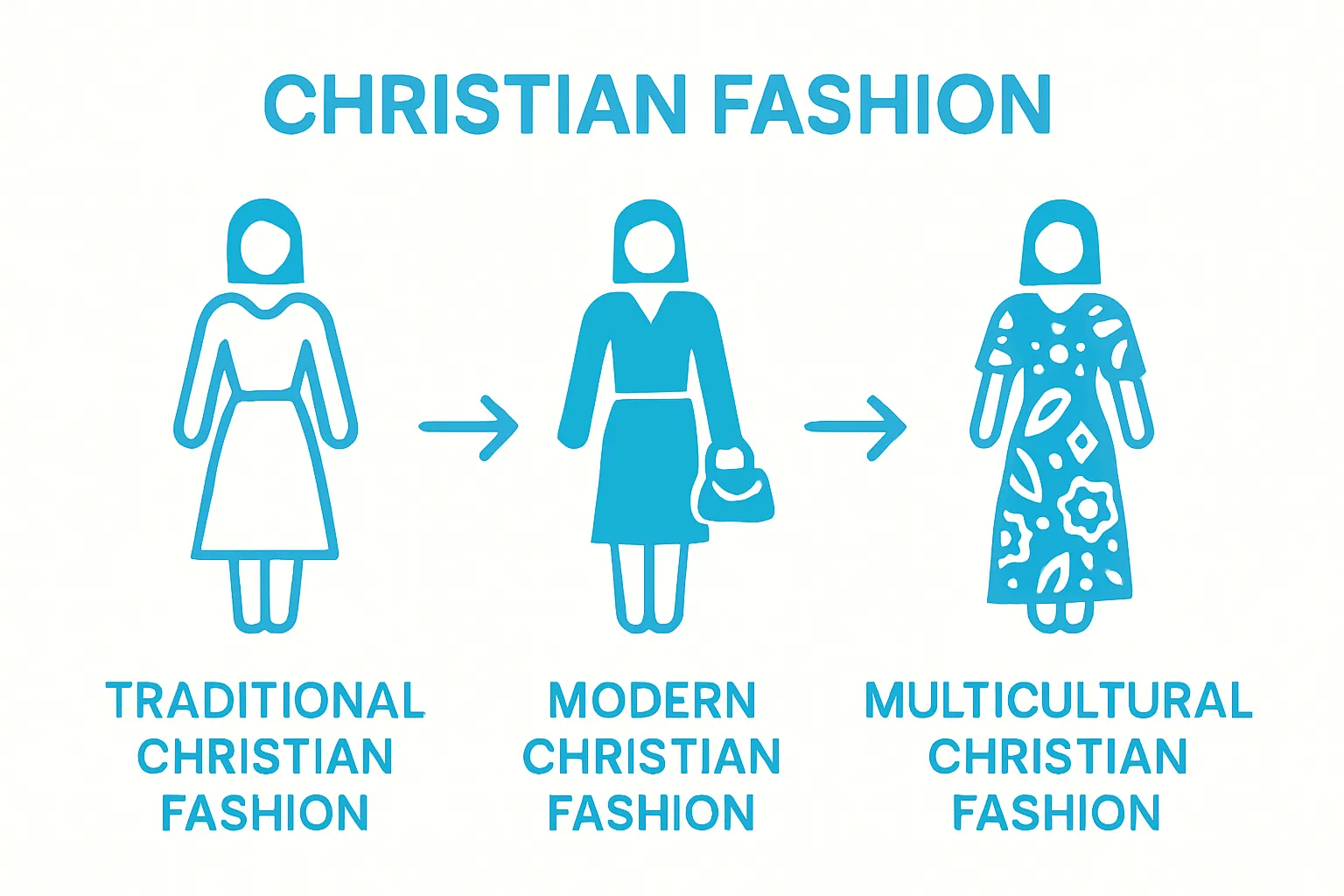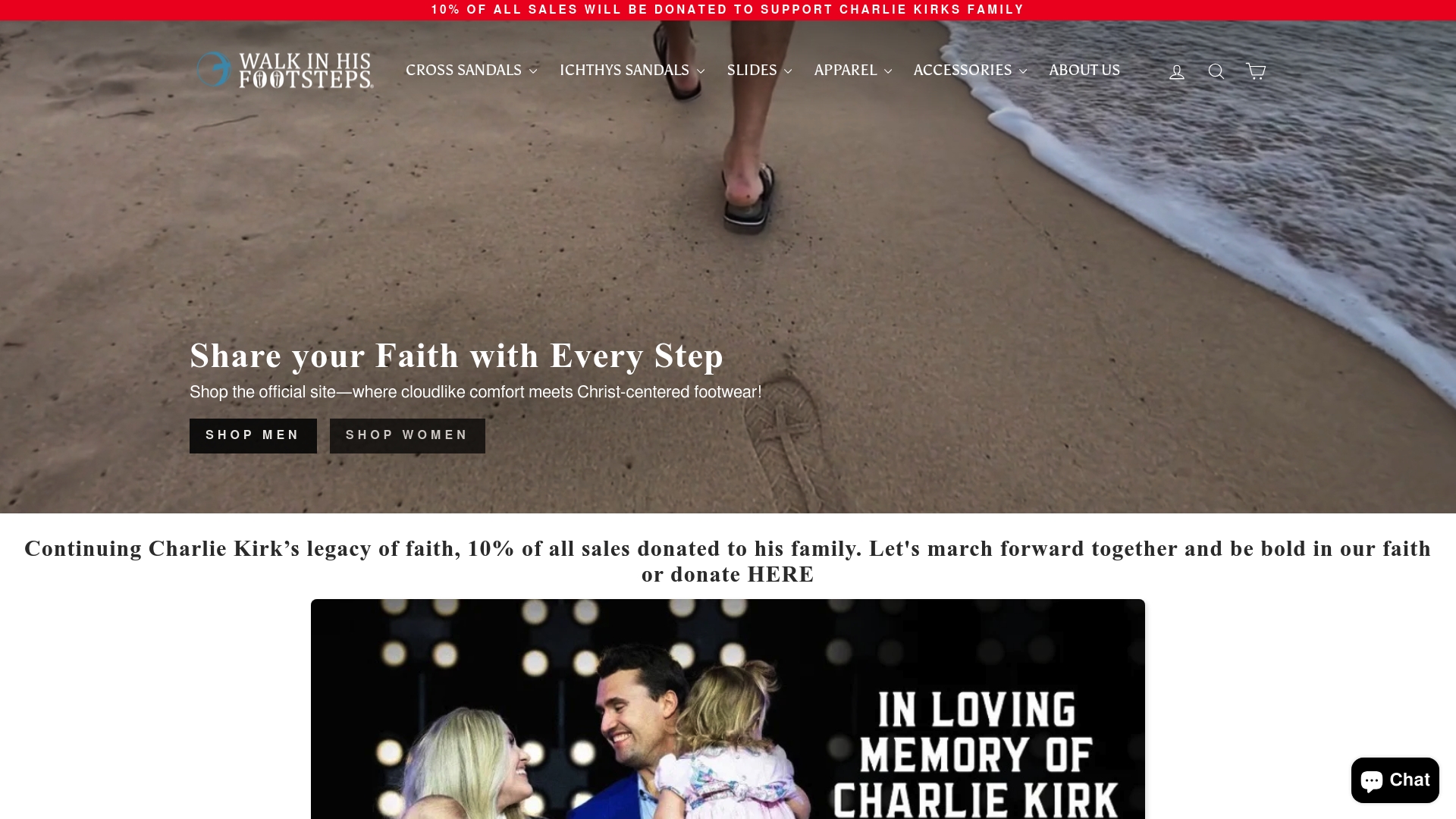Christian fashion has moved far beyond traditional, rigid dress codes and now encompasses a spectrum of styles shaped by faith, culture, and personality. You might expect these changes to be slow or subtle, but modern trends reveal a much different reality. Recent research shows younger generations are embracing contemporary and casual outfits as expressions of spirituality and identity, making Christian fashion evolution one of the fastest shifts in religious culture today.
Table of Contents
- What Is Christian Fashion Evolution?
- The Influence Of Faith On Fashion Choices
- Cultural Shifts And Their Impact On Christian Attire
- Modern Trends In Christian Fashion
- The Role Of Community In Fashion Choices
Quick Summary
| Takeaway | Explanation |
|---|---|
| Christian fashion reflects spiritual journeys | Clothing choices serve as expressions of personal beliefs and faith identities. |
| Modesty is interpreted with creativity | Modern styles showcase a balance between faith principles and contemporary fashion trends. |
| Community influences fashion choices | Shared values and expectations shape individual dress practices within Christian groups. |
| Fashion is a form of worship | Clothing selections can symbolize spiritual devotion and personal commitments to faith. |
| Generational shifts redefine attire norms | Younger Christians embrace personal expression, changing traditional views on religious dress. |
What is Christian Fashion Evolution?
Christian fashion evolution represents a dynamic journey of self-expression, faith representation, and cultural adaptation through clothing choices. Contemporary religious fashion research reveals how Christian attire has transformed from rigid traditional styles to more nuanced, personal interpretations that reflect individual spiritual identities.
Theological Roots of Christian Fashion
The concept of Christian fashion evolution emerges from profound theological considerations about modesty, identity, and spiritual representation. Clothing in Christian contexts has never been merely about appearance but serves as a profound statement of inner beliefs and external commitments. Throughout history, Christian communities have used clothing as a subtle yet powerful medium of communicating faith values, moral principles, and denominational affiliations.
Key elements defining Christian fashion evolution include:
- Reflection of personal spiritual journey
- Expression of theological understanding
- Cultural responsiveness while maintaining core faith principles
- Balancing contemporary style with scriptural guidelines
Cultural Adaptation and Personal Expression
Modern Christian fashion evolution represents a sophisticated dialogue between traditional religious expectations and contemporary style trends. It challenges outdated perceptions that modest clothing must be dull or restrictive. Instead, believers are creating fashion statements that are simultaneously trendy, respectful, and spiritually meaningful. Research from Baylor University suggests this evolution demonstrates how faith communities continuously reinterpret external representations of inner spiritual experiences.
For those interested in exploring this fascinating intersection of faith and fashion, our guide on understanding Christian clothing provides deeper insights into how clothing choices reflect spiritual identities.
The Influence of Faith on Fashion Choices
Faith serves as a profound and transformative lens through which believers interpret and select their clothing, transcending mere aesthetic considerations. Religious clothing scholars argue that fashion choices among Christian communities represent a complex interplay between personal theology, cultural norms, and spiritual identity.
Theological Foundations of Clothing Selections
Christian clothing selections are deeply rooted in biblical principles of modesty, dignity, and spiritual representation. These choices reflect an understanding that personal attire communicates more than external appearance it reveals inner spiritual convictions. Believers often view clothing as a form of worship and self-expression, carefully selecting garments that honor their faith commitments and demonstrate respect for divine principles.
Key theological considerations in fashion choices include:
- Maintaining bodily dignity
- Reflecting inner spiritual transformation
- Demonstrating respect for religious community standards
- Avoiding clothing that might compromise personal or communal spiritual values
Personal Identity and Spiritual Symbolism
Clothing in Christian contexts becomes a nuanced language of spiritual communication. Each fashion choice represents a deliberate statement about personal faith journey, theological understanding, and relationship with religious traditions.
Some believers intentionally select clothing that subtly signals their spiritual commitments, creating visual narratives that transcend traditional fashion boundaries.
For those seeking deeper insights into faith-based clothing principles, our comprehensive guide to faith-based clothing offers valuable perspectives on navigating the intersection of personal style and spiritual expression.
Cultural Shifts and Their Impact on Christian Attire
Contemporary religious fashion research reveals how societal transformations have profoundly reshaped Christian clothing practices. The intersection of faith and fashion represents a dynamic landscape where traditional expectations continuously evolve in response to broader cultural movements.
Generational Perspectives on Religious Dress
Modern Christian communities are experiencing significant shifts in clothing interpretations across generational lines. Younger believers increasingly view fashion as a means of authentic self expression rather than strict adherence to historical dress codes. This transformation reflects a nuanced understanding of spirituality that embraces individual creativity while maintaining core theological principles.
Below is a comparison of generational perspectives on Christian attire, highlighting the main differences discussed in the article.
| Generation | Approach to Attire | Interpretation of Modesty | Denominational Dress Expectations | Cultural Diversity in Choices |
|---|---|---|---|---|
| Older Generations | Traditional and formal | Strict and defined | High rigidity | Limited and homogeneous |
| Younger Generations | Casual and contemporary | Personal and flexible | Reduced rigidity | Inclusive and diverse in style |
Key generational differences in Christian attire include:
- Increased acceptance of casual and contemporary styles
- Greater emphasis on personal interpretation of modesty
- Reduced rigidity in denominational dress expectations
- More inclusive approach to cultural diversity in clothing choices
Technological and Social Media Influences
Digital platforms have dramatically accelerated the evolution of Christian fashion by providing unprecedented exposure to diverse style perspectives. Social media enables believers to share and explore clothing choices that reflect both spiritual identity and personal aesthetic. This global connectivity has dismantled traditional geographic and denominational boundaries around religious dress.
For those interested in exploring how faith intersects with contemporary fashion trends, our guide on understanding Christian clothing stores offers comprehensive insights into this fascinating cultural phenomenon.
Modern Trends in Christian Fashion
Contemporary religious fashion scholars highlight an emerging paradigm where Christian fashion transcends traditional boundaries, embracing contemporary styles while maintaining spiritual authenticity. The modern landscape reflects a sophisticated approach to clothing that celebrates individual expression within biblical principles.
Emerging Design Philosophies
Contemporary Christian fashion represents a deliberate reimagining of religious attire. Designers and believers are collaboratively creating clothing lines that communicate spiritual values through innovative, stylish designs. This approach moves beyond restrictive dress codes, instead focusing on garments that reflect inner spiritual transformation and contemporary aesthetic sensibilities.
Key characteristics of modern Christian fashion trends include:

- Integration of minimalist design principles
- Emphasis on comfortable, versatile clothing
- Subtle faith-based design elements
- Inclusive sizing and adaptive clothing options
Global and Multicultural Influences
The globalization of Christian fashion has introduced unprecedented diversity in style interpretations. Believers from different cultural backgrounds are now sharing and blending fashion approaches, creating a rich tapestry of design that reflects the universal nature of faith. This global exchange challenges previous monolithic understandings of religious dress, celebrating the multiplicity of Christian expressions.

For those interested in understanding the deeper significance of faith-based clothing choices, our guide on why Christian clothing matters provides comprehensive insights into this evolving cultural phenomenon.
The Role of Community in Fashion Choices
Religious community scholars emphasize that fashion choices within Christian communities are far more than personal aesthetic decisions. They represent complex social interactions that reflect shared values, theological interpretations, and collective identity.
Communal Validation and Spiritual Expression
Christian fashion is fundamentally a collaborative experience where individual clothing choices are subtly negotiated through community expectations and shared spiritual understanding. Believers often seek implicit approval from their faith community, creating a nuanced dialogue between personal style and collective theological principles. This dynamic ensures that fashion becomes a form of unspoken communication, signaling belonging and spiritual commitment.
Key aspects of community influence on fashion choices include:
- Reinforcing collective theological interpretations
- Creating visual markers of spiritual identity
- Establishing non verbal communication within faith groups
- Providing supportive framework for personal style exploration
Accountability and Shared Moral Standards
Christian communities serve as critical support systems that guide fashion choices through gentle accountability and shared moral frameworks. These social networks provide guidance on appropriate attire, helping individuals navigate complex intersections between personal expression and communal expectations.
Here is a summary table outlining key theological and community influences that shape Christian fashion choices, providing an at-a-glance view of the main conceptual factors covered.
| Influence Type | Description | Example Impact on Fashion Choices |
|---|---|---|
| Theological Foundations | Rooted in biblical principles of modesty and dignity | Selecting modest styles that express faith |
| Personal Identity | Expression of personal faith journey and spirituality | Wearing attire that signals spiritual beliefs |
| Community Standards | Shaped by collective expectations and support networks | Choosing garments that align with group norms |
| Cultural Adaptation | Balancing contemporary trends with faith principles | Integrating modern designs with spiritual meaning |
| The result is a dynamic environment where fashion becomes a collaborative spiritual practice, balancing individual creativity with collective wisdom. |
For those interested in understanding how faith communities shape clothing choices, our comprehensive guide on Christian clothing matters offers deeper insights into this intricate social dynamic.
Ready to Wear Your Faith and Style in Every Step?
You have learned how Christian fashion is evolving as believers look for clothing and footwear that balance spiritual identity, comfort, and modern design. If you find yourself searching for ways to express your faith in everyday life without sacrificing style or authenticity, you are not alone. Many readers want to break free from strict dress codes and find new ways to share their journey. Modern Christian fashion is all about personal expression, subtle symbolism, and community connection. Our patented cross bottom and Jesus fish bottom slip-on footwear meets these needs by offering both comfort and clear faith representation with every step.

Explore the full collection at Walk In His Footsteps and discover how you can make faith visible through each stride. For more on combining faith and fashion, visit our guide on understanding Christian clothing or read about why Christian clothing matters. Step into a new era of spiritual style today and be part of the Christian fashion evolution.
Frequently Asked Questions
What is Christian fashion evolution?
Christian fashion evolution refers to the dynamic journey of self-expression, faith representation, and cultural adaptation through clothing choices, reflecting individual spiritual identities over time.
How have societal changes impacted Christian attire?
Societal transformations have reshaped Christian clothing practices, leading to more casual and contemporary clothing choices that embrace individual style while maintaining core theological principles.
What role does community play in fashion choices among Christians?
The Christian community influences fashion choices by establishing shared values and moral standards, creating a supportive environment where individual expression aligns with collective theological interpretations.
What are the key theological considerations in Christian clothing selections?
Key theological considerations include maintaining bodily dignity, reflecting inner spiritual transformation, respecting religious community standards, and choosing clothing that aligns with personal or communal spiritual values.
Recommended
- Understanding Why Christian Clothing Matters for Believers – Walk In His Footsteps
- Understanding Christian Clothing Stores: Faith and Fashion – Walk In His Footsteps
- Understanding Christian Clothing: Significance and Styles – Walk In His Footsteps
- Understanding the Christian Clothing Company and Its Values – Walk In His Footsteps




